Guitar World Verdict
There is no shortage of ES-alikes on the market but the Vox Bobcats' build and sound identifies them as full-size thinline semi-hollows with a difference. With its inspired trio of single coils, the S66 offers a brighter take on the semi, while the V90 is more conventional, more classic. Both are the 'cat's pyjamas.
Pros
- +
Good builds.
- +
Light weight and resonant.
- +
Pickup quality and switching.
Cons
- -
There’s plenty of lower-priced competition out there.
You can trust Guitar World
Think Vox guitars and your memory takes you back. Brian Jones with his teardrop-shaped Mk series perhaps? Yep. Thinlines inspired by the Gibson ES-335? Nope, no bells are ringing.
But when we strolled onto Vox’s 2020 NAMM booth, a couple caught our eye: the Bobcat S66 and V90. We hastily ordered them up and, thanks to the general chaos of 2020, waited nearly a year before they arrived. The original Vox Bobcat dates back to the mid-60s when everyone was clamouring to make guitars as the musical world exploded.
Demand on that scale unfortunately didn’t last and there were plenty of casualties. By the end of the 60s many brands were sold or simply stopped producing instruments. So, the first problem these new Bobcats have is that few (ourselves included) will remember the originals.
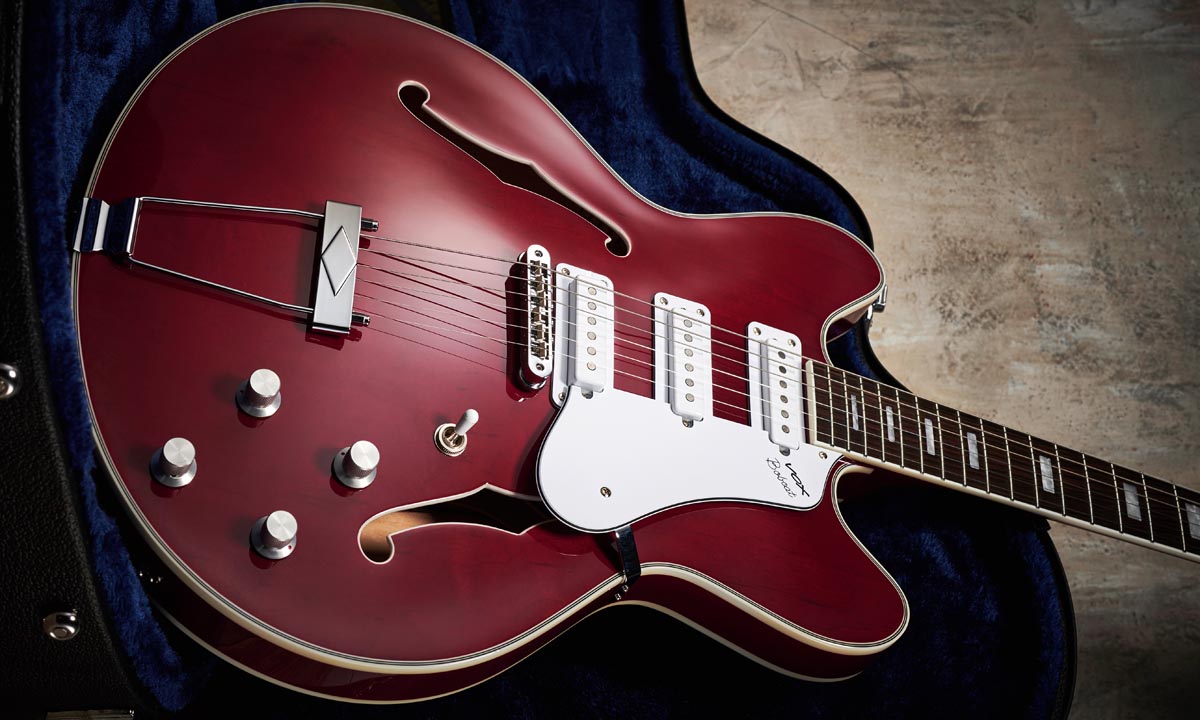
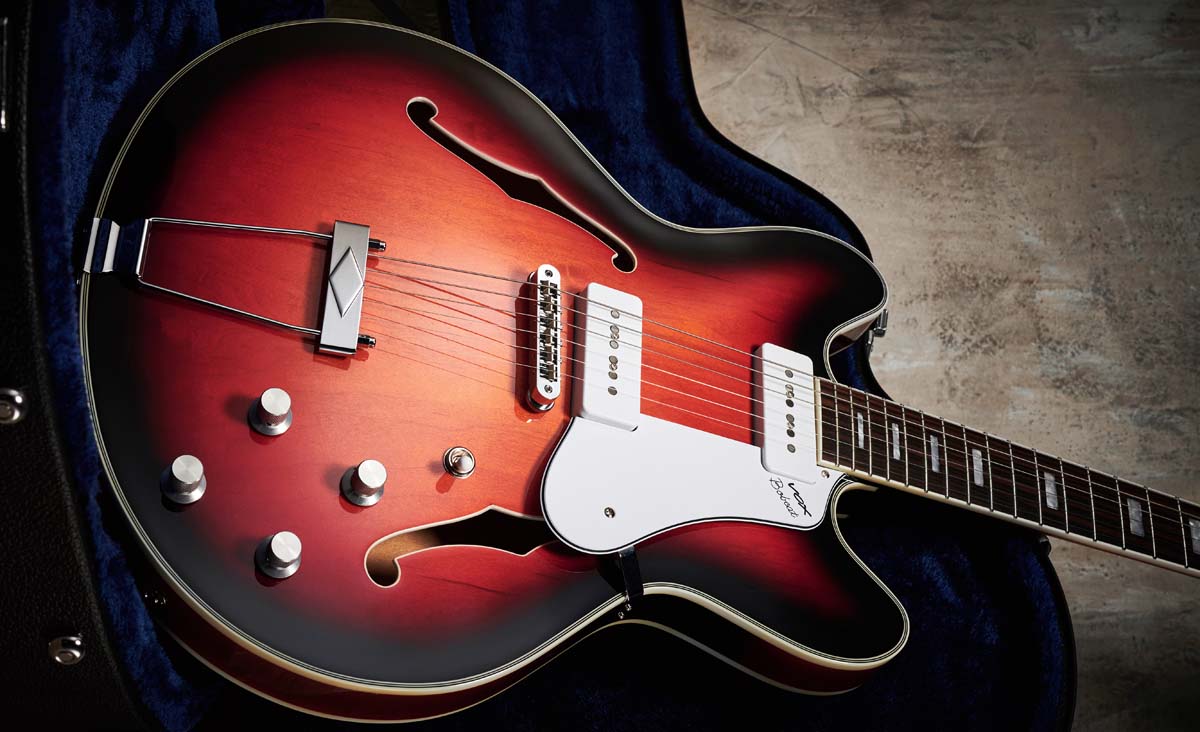
The second is that Vox really isn’t renowned for making guitars in contemporary times. We had high hopes for the Virage ranges, which first appeared back in 2008, but those limped on to obscurity. For the record, these finely designed and made instruments command good prices on the used market – if you can find any.
But, as we all know, designing and making a good guitar is one thing; hitting the right price point, not least the zeitgeist, is another matter entirely. Then there’s brand confidence.
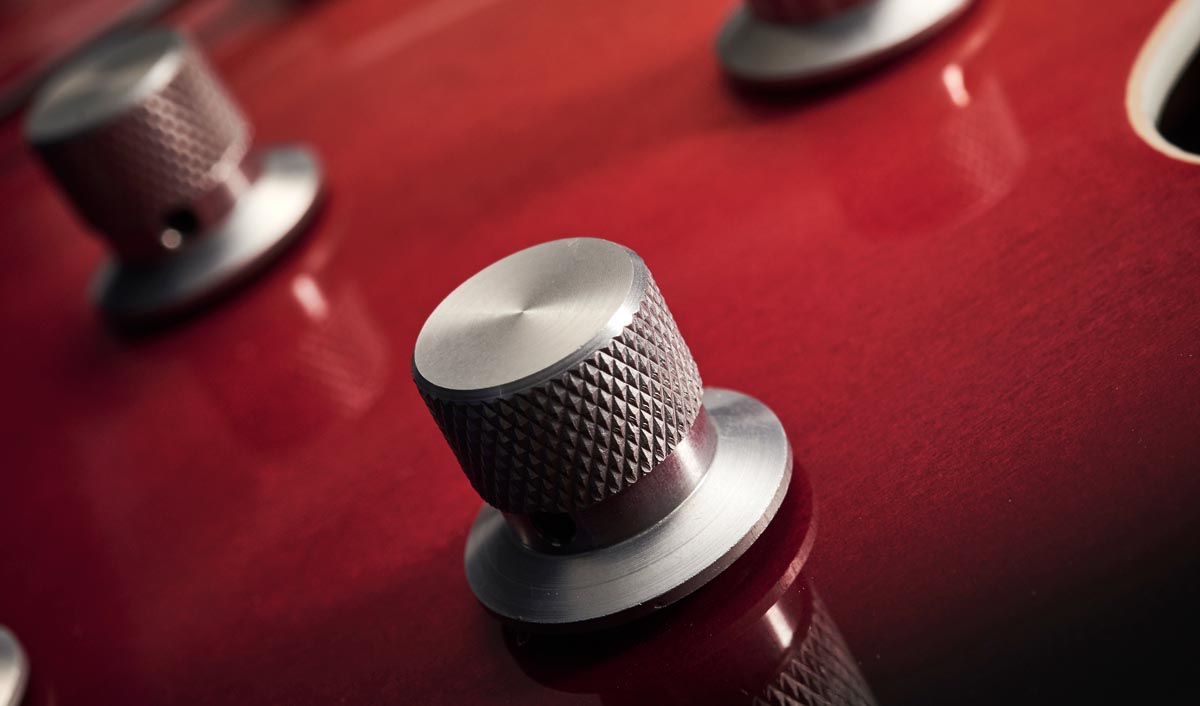
Alongside these retro-looking electrics, the other guitars in the current Vox range include the highly polarising high-tech modelling Starstream. Let’s move on… Far from a modernist statement, then, these two new Bobcats differ only in their pickups and controls, which we’ll get to in a minute.
Both are fairly classic-style semis using maple laminate construction for the bodies, and mahogany necks – possibly with a headstock splice, certainly a heel stack, although it’s hard to tell under even the more translucent red of our S66 and impossible on the V90 due to the dark/near black ’bursting over the heel area and back of the headstock.
Both necks also feature a volute to strengthen the thinnest area of the neck at the nut, which is, of course, weakened by the truss rod access route.
Note, too, the two screws that hold the large plastic cover in place (holding the cover better than a single screw) are far less fussy that the typical dual screws placed at the bottom of the cover. The Bobcat is a full-size semi, too, like an ES-335, meaning there’s no down-sizing here, although Vox has gone for a ‘halfway’ scale length of 635mm (25 inches), like PRS uses, to sit between the Fender and Gibson classics.
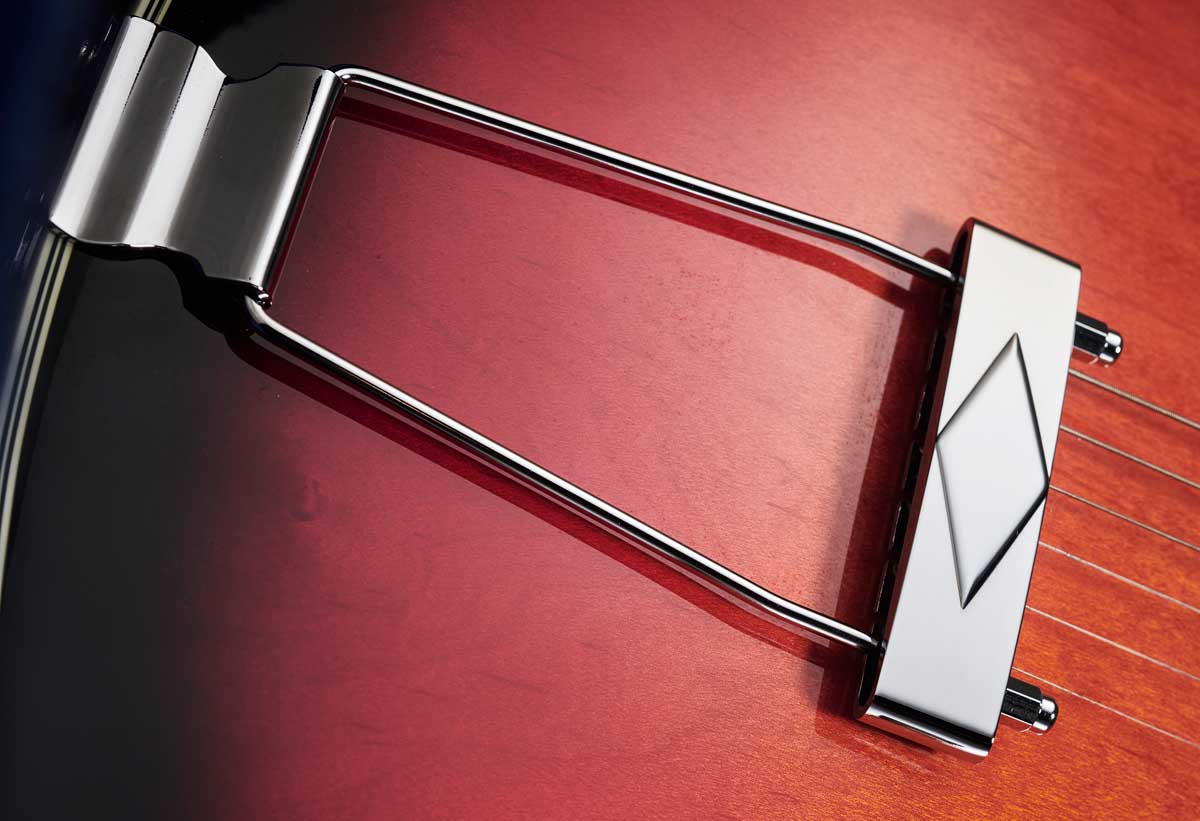
Overall craft is perfectly good, certainly of a similar level to the Guild Newark St Korean-made offerings. The bindings are very cleanly scraped, the inner purfling inside the binding on the top edge looks very neat and tidy, and peering through the f-holes the insides look shipshape, too, with neatly sawn (aka kerfed) linings.
Here, you can see that spruce centre block is reduced in width pretty much under the pickups but full width from the bridge to the base and where the neck joins the body, just slightly wider than the spread of the tune-o-matic bridge.
While the colour choice is pretty classic, all the plastic parts are bright white along with the bound edges, f-holes, fingerboard and headstock. That large Vox logo, which goes back to the 60s, and the lightly engraved Vox Bobcat logo on the pickguard leave us in little doubt of what we’re playing.
The machined and knurled-top control aluminium knobs also add an element of modernism to the design – despite the fact that they actually ape the original knobs – but we have to say they feel great in use, particularly the smooth rotational feel of the pots themselves. The neck pitch on both is very similar, which means both tune-o-matic bridges sit just right height-wise, after which the strings relax down to the trapeze tailpiece.
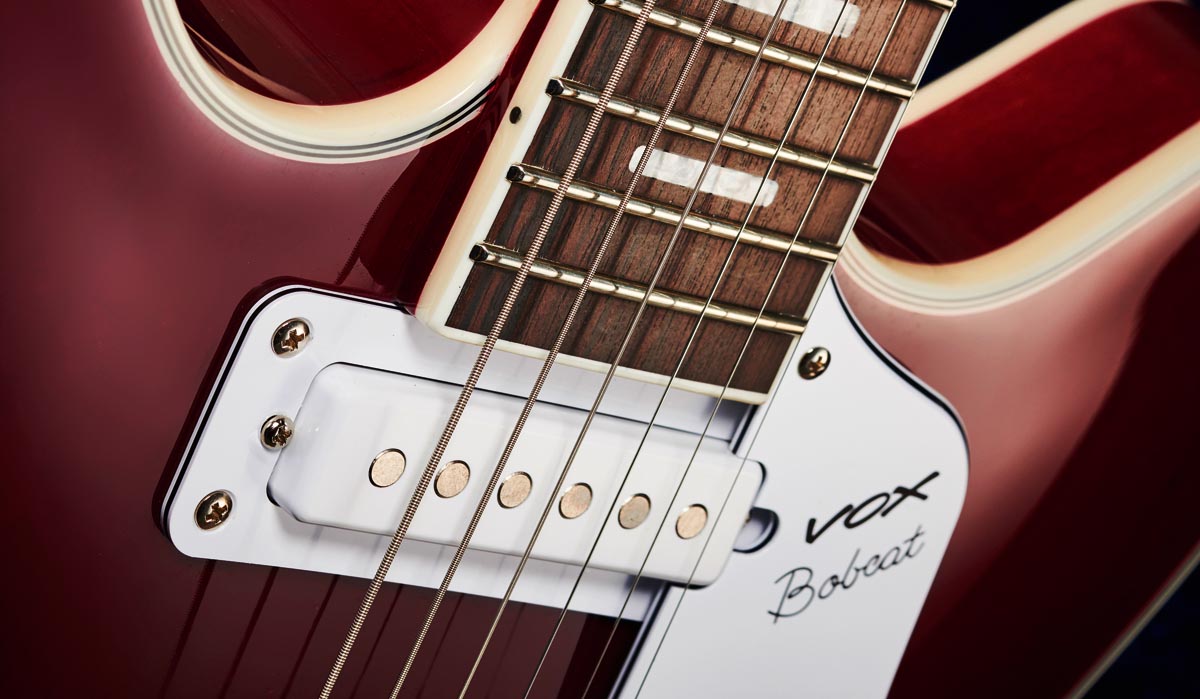
Many prefer the more solidbody style of a stud tailpiece – and, who knows, maybe we’ll see that ‘HT’ version soon – but there’s something about the resonance, especially played unplugged, of trapezes like these that gets to the essence of the semi-hollow design. Of course, if you want to add a Bigsby then there are no stud post holes to fill. Again, maybe that’ll be an option down the road.
We’re not told the specific factory that Vox is using in Korea, and unlike the more characterful Guild Newark St models the inside label here looks like it was created by the design department’s intern. What’s wrong with printing what factory a guitar comes from, let alone giving the designers a shout-out?
Both are very lively and seem to sit in the middle of those ES-330 and ES-335 benchmarks
If the actual build is pretty conventional then the pickups on both are a little different from what’s found on the majority of thinline semis we’re offered from the mainstream market. The S66 recalls the original Bobcat’s array and the style used on quite a few classic Vox guitars: they’re single coils but in distinct square-edged covers and are mounted in individual rectangular pickup rings.
The V90’s soapbars appear more conventional but have magnetic rod-style polepieces instead of the usual height-adjustable poles of the Gibson classic. And while the V90 uses a pretty standard control style with a three-way toggle and individual pickup volume and tones, laid out like those original Vox semis, the S66 looks the same but we actually have a volume control for each pickup and a master tone.
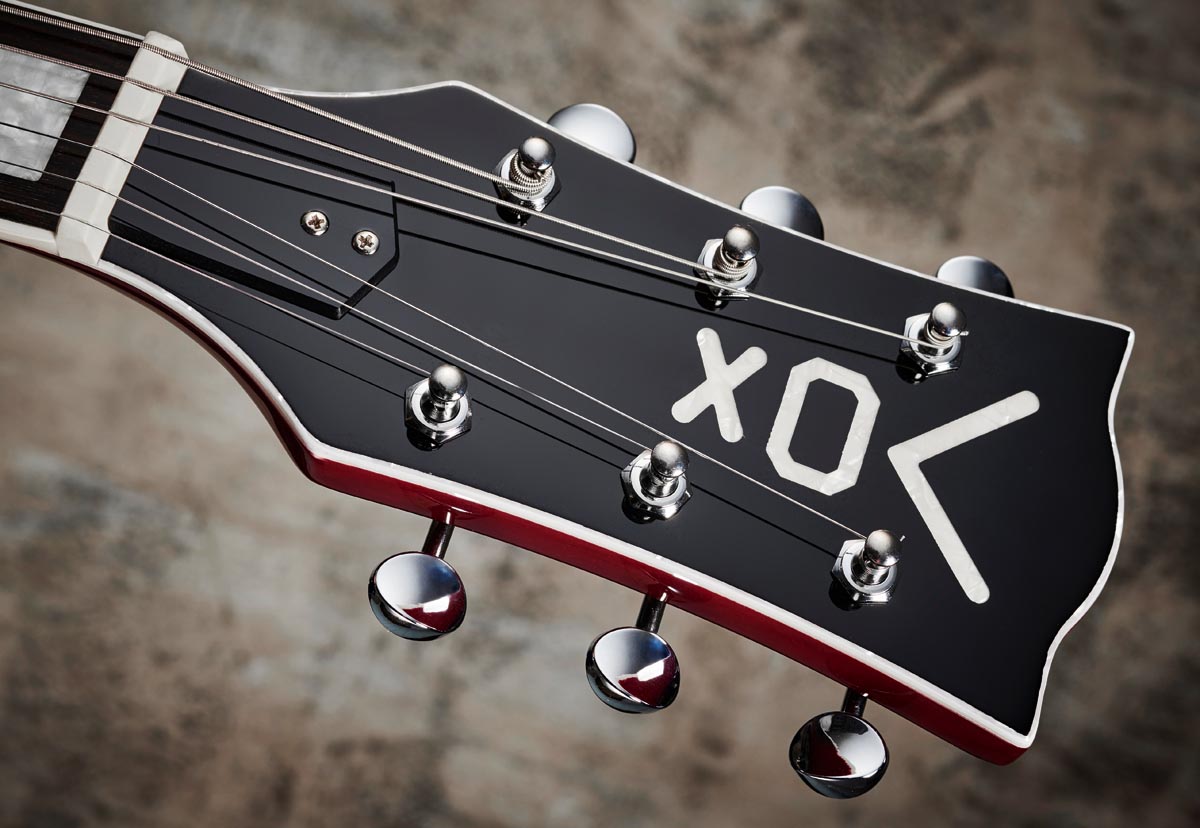
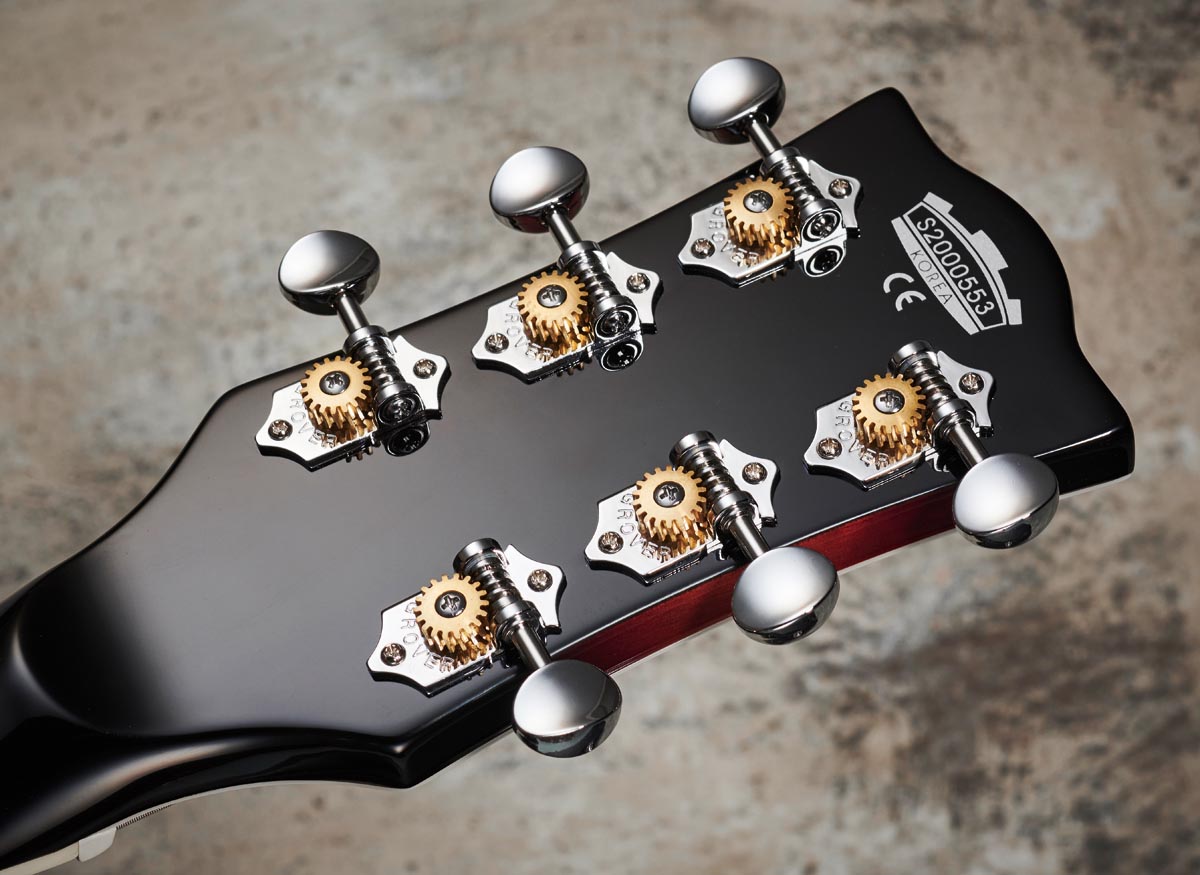
Feel & Sounds
The first thing this writer did was plug in and play. And before we get to the details it’s fair to say we were very engrossed in the S66. It’s not that the V90 doesn’t hold its own, it’s just that the unusual pickup array, not to mention its controls, create a guitar with plenty to listen to.
It’s the middle pickup volume control that’s the key as you can remove the middle pickup totally from the circuit, creating a two-pickup guitar with the usual bridge, both and neck selections from the three-way toggle, or via that dedicated volume control blend it in with any of those selections.
The V90 would perhaps be the more classic choice, but those who like to work with a more subtle palette will find plenty in the slightly lighter-sounding S66
Any Strat owners with the ‘seven-sound mod’ will be aware of the two extra sounds – bridge and neck together and all three pickups – but this interesting circuit could be applied, and we’re sure many have done this on a three-pickup Les Paul Custom, for example.
Once you quickly get used to the key controls – that middle pickup volume control and the master tone – it’s surprisingly intuitive and, to be honest, Vox could easily have added a Gretsch/Guild-style master volume here, too, as there are a host of subtle colours available by altering the specific volumes in either a two- or three-pickup mix: the ability to raise or lower the output without upsetting that mix would be handy, not least when we get back to a stage.
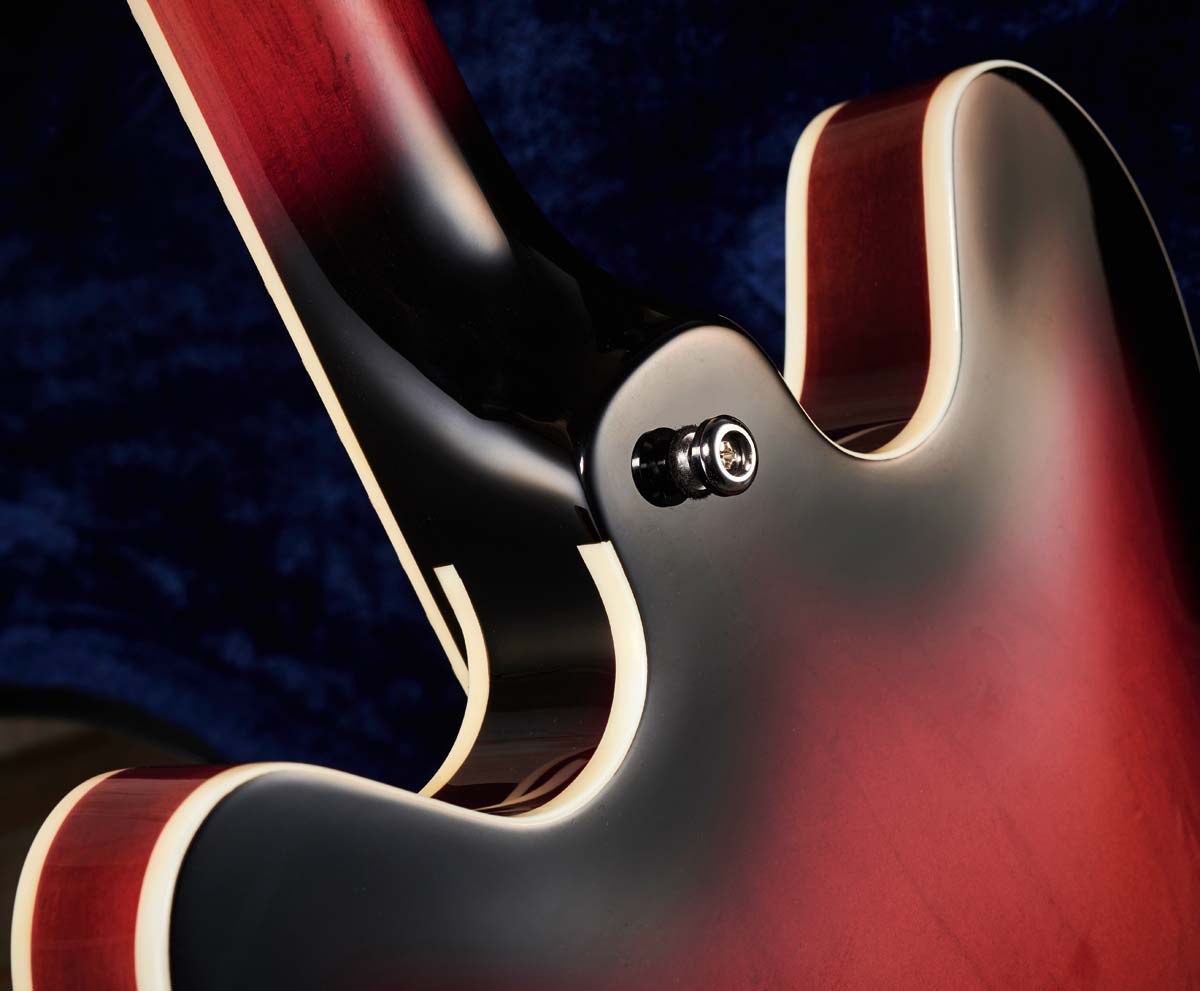
But what do they sound like? Ah, yes. Well, that’s another thing. Both are very lively and perhaps blindfolded we might guess we were playing a hollow ES-330 rather than a centre-blocked ES-335-alike. In truth, both seem to sit in the middle of those ES-330 and ES-335 benchmarks.
It would be rude not to audition these with anything else but a Vox amp in person and in the digital world, and in moments we’re time-travelling to bright, happy shiny jangle that is easily nudged into Townshend/Weller edgy crunch on either. Game on. The V90 would perhaps be the more classic choice, but those who like to work with a more subtle palette will find plenty in the slightly lighter-sounding S66.
The overall voicing does sit in the brighter single coil area, certainly in comparison with our Seymour Duncan Seth Lover loaded Ibanez AS-50 and Guild Newark St Starfire V with its smaller aperture LB-1 mini-humbuckers. But rolling back the tone a little or plugging back the volumes certainly warms things up.
The soapbars on the V90, then, provide a brighter, cleaner voicing than our PAF-y Ibanez, and in terms of output the neck pickup is a little dominant. Both tones are smoothly graduated and you can pull back the treble spike if you prefer more classic warmth. However, there’s no hum-cancelling in the mix position.
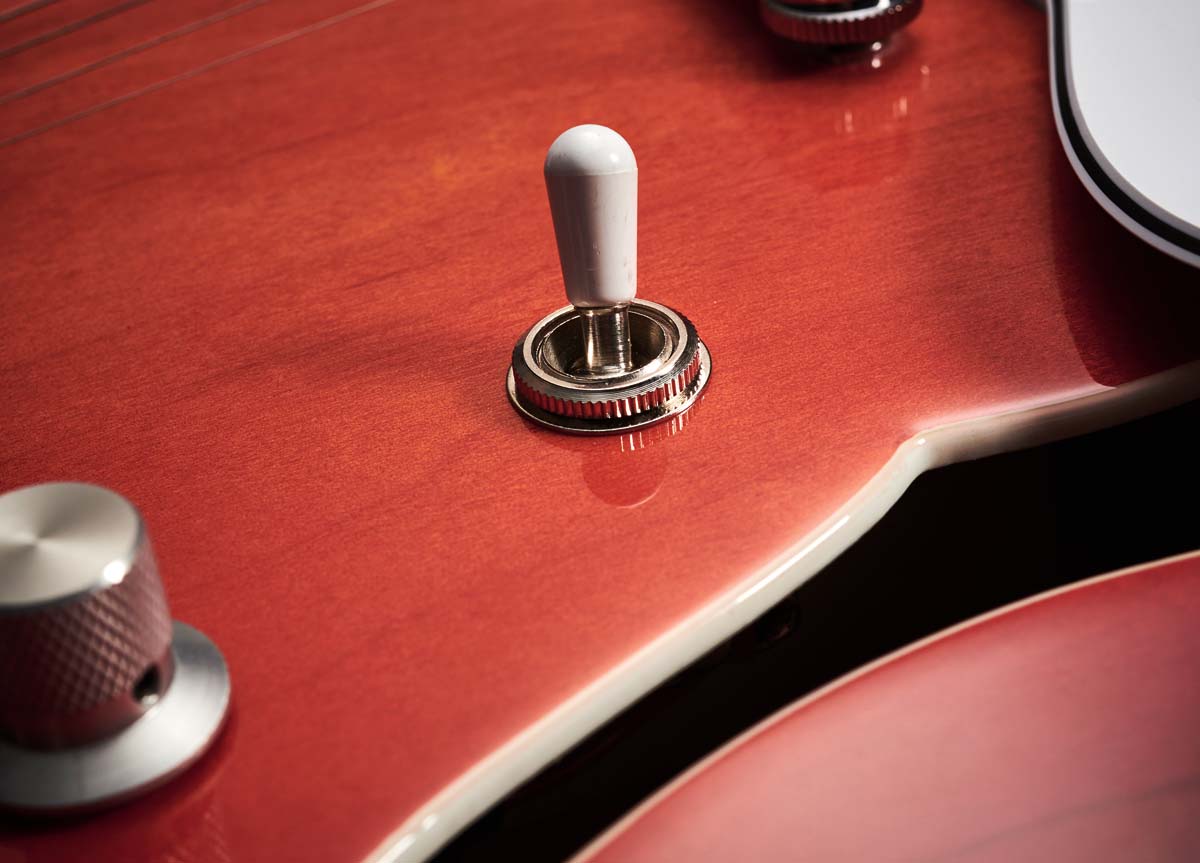
The S66 doesn’t seem to be hum-cancelling in any position, either, and the nature of the pickups means that it sounds a little quiet again compared with our Ibanez’s PAF-alikes. So, the sonic experience is certainly a little different from a more generic ES-335-alike, but the quality is good.
To rein in the horses a bit it’s got to be said that out of the box, even after string stretching, tuning stability is a little wayward, which we’d put down to the nut fettling: with a headstock back angle and splayed strings from the nut to the tuners, the usually troublesome D and G string nut grooves need a little more attention. That aside, these are perfectly good players. There’s nothing objectionable yet neither comes across as overly generic.
Familiar, certainly, but there’s just that little extra something going on that keeps us playing. The fretwork is very tidy from a sensible medium gauge, the frets sitting over the binding with well-rounded ends. Both fingerboards are a deep, rich brown-coloured ebony with crisply installed pearloid block inlays.
The shallow C neck carves are virtually identical, relatively slim depths of 20.5mm at the 1st fret, filling out to 23mm by the 12th with plenty of width to accommodate the modern 52.5mm string spacing at the bridge. The setups don’t offend, either. Those easily sorted tuning issues aside, both are perfectly good players.
Verdict
The world really doesn’t need another copy, does it? Outwardly, that’s what it looks like we have here. But with some constructional and pickup twists these have some credibility.
The S66 is quite inspired: plonk a set of Strat singles on a full-size thinline semi and throw in a wiring loom from a modded Les Paul Custom. Neat. The V90’s more direct drive is no less valid, not least to those who like to spice their music with some Mod sheen.
There’s plenty of credible semi action at a lower price point to these – even a few with three pickups – and that perhaps is the quandary here: you’re going to have to be very confident that either of these will suit your style, or indeed take you somewhere new. That said, the brighter voicing, lightweight resonance and overall playability has plenty going for it.
Spec
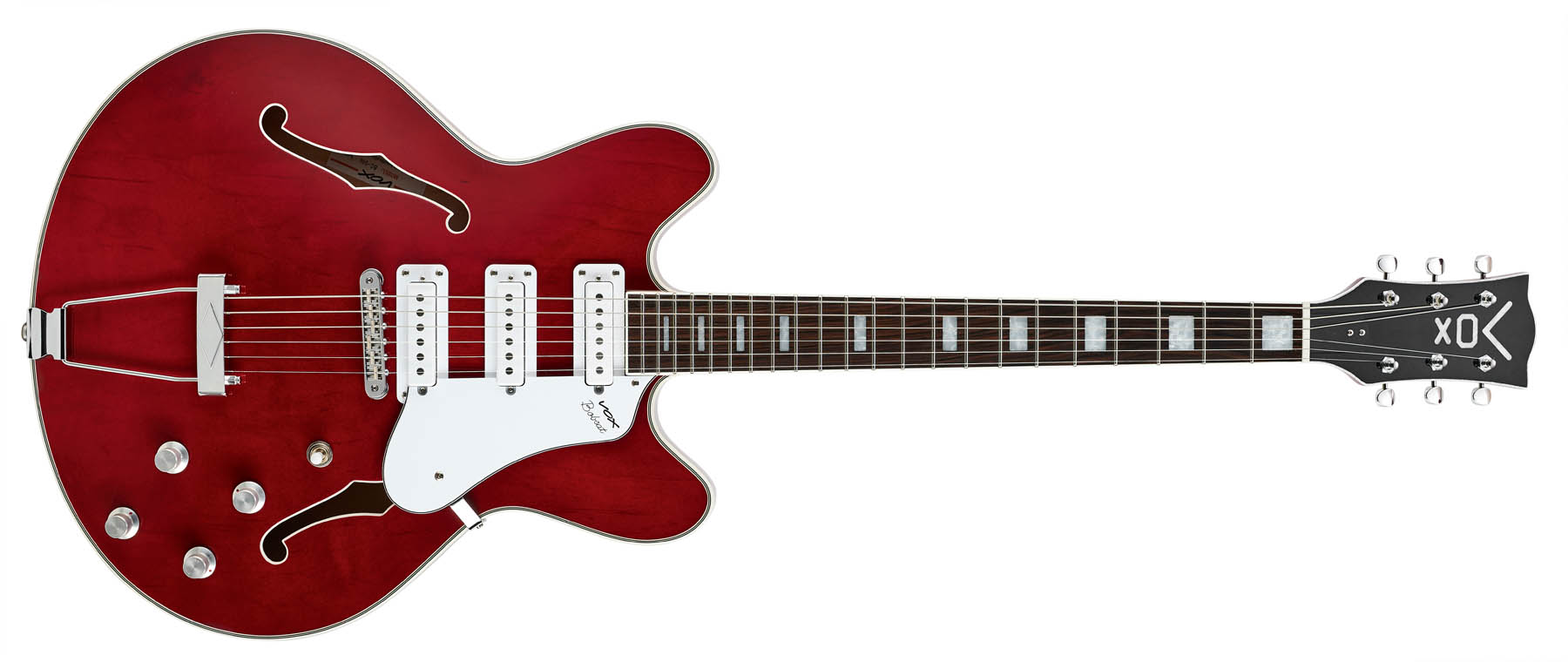
Vox Bobcat S66
- PRICE: $1,399 / £1,279 (inc case)
- ORIGIN: Korea
- TYPE: Double-cutaway centre-blocked thinline semi hollow electric
- BODY: Laminated maple w/ weight relieved spruce centre-block
- NECK: 1-piece mahogany, glued-in
- SCALE LENGTH: 635mm (25”)
- NUT/WIDTH: White synthetic/42.7mm
- FINGERBOARD: Indonesian ebony, block inlays, 305mm (12”) radius
- FRETS: 22, medium jumbo
- HARDWARE: Tune-o-matic style bridge with trapeze tailpiece, Grover open-back tuners – chrome-plated
- STRING SPACING, BRIDGE: 52.5mm
- ELECTRICS: 3x Vox S66 single coils, 3-way toggle pickup selector switch, individual pickup volume controls and master tone
- WEIGHT (kg/lb): 3.27/7.19
- OPTIONS: None
- LEFT-HANDERS: No
- FINISHES: Translucent Red (as reviewed) and Sunburst, opaque Black – all gloss polyester
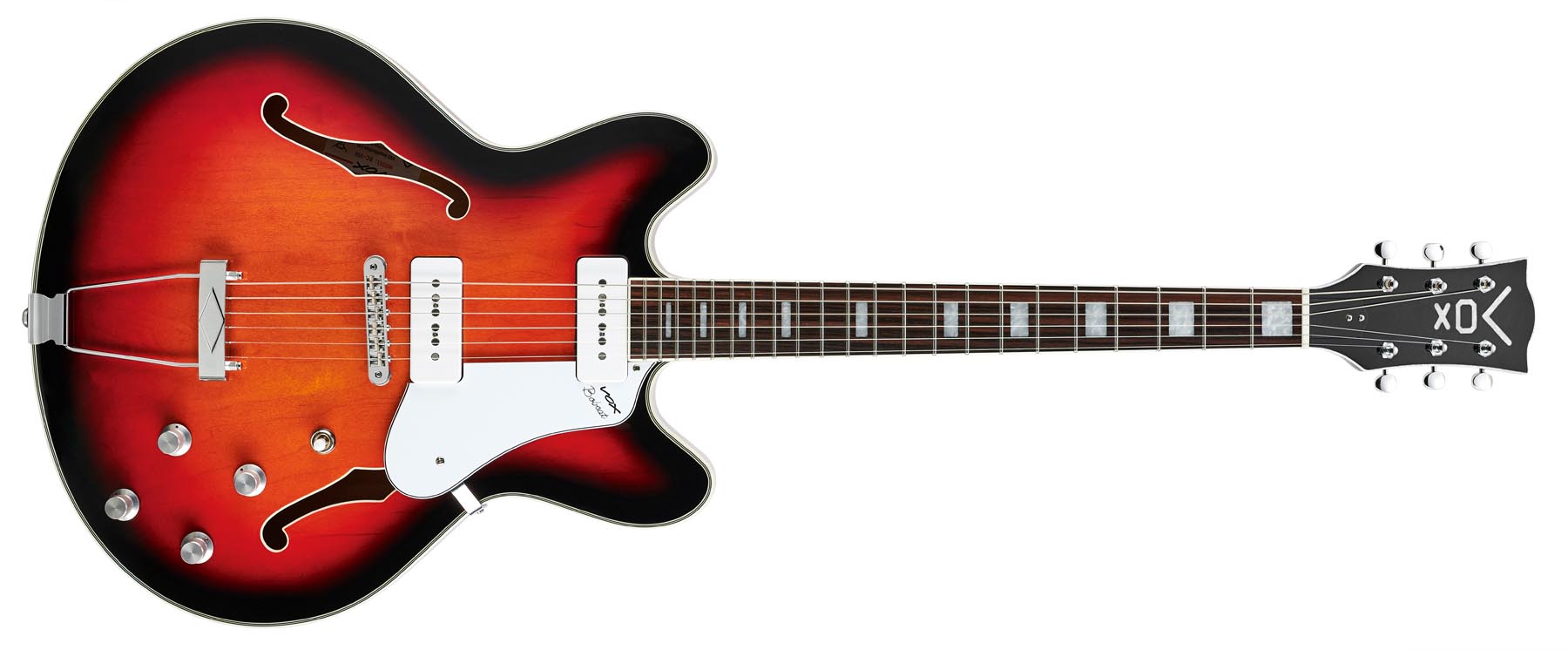
Vox Bobcat V90
- PRICE: From $1,399 / £1,279 (inc case)
- ORIGIN: Korea
- TYPE: Double-cutaway centre-blocked thinline semi hollow electric
- BODY: Laminated maple w/ weight relieved spruce centre-block
- NECK: 1-piece mahogany, glued-in
- SCALE LENGTH: 635mm (25”)
- NUT/WIDTH: White synthetic/43mm
- FINGERBOARD: Indonesian ebony, block inlays, 305mm (12”) radius
- FRETS: 22, medium jumbo
- HARDWARE: Tune-o-matic style bridge with trapeze tailpiece, Grover open back tuners – chrome-plated
- STRING SPACING, BRIDGE: 52.5mm
- ELECTRICS: 2x Vox V90 soapbar single coils, 3-way toggle pickup selector switch, individual pickup volume and tone controls
- WEIGHT (kg/lb): 3.13/6.89
- OPTIONS: None
- LEFT-HANDERS: No
- FINISHES: Translucent Sunburst
- (as reviewed) and Cherry Red,opaque Black – all gloss
- NB: Just as we were going to press, Vox announced the 2021 Bobcats with Bigsby B70 vibratos in both V90 and S66 styles.
- CONTACT: Vox

Dave Burrluck is one of the world’s most experienced guitar journalists, who started writing back in the '80s for International Musician and Recording World, co-founded The Guitar Magazine and has been the Gear Reviews Editor of Guitarist magazine for the past two decades. Along the way, Dave has been the sole author of The PRS Guitar Book and The Player's Guide to Guitar Maintenance as well as contributing to numerous other books on the electric guitar. Dave is an active gigging and recording musician and still finds time to make, repair and mod guitars, not least for Guitarist’s The Mod Squad.
“It holds its own purely as a playable guitar. It’s really cool for the traveling musician – you can bring it on a flight and it fits beneath the seat”: Why Steve Stevens put his name to a foldable guitar
“Finely tuned instruments with effortless playability and one of the best vibratos there is”: PRS Standard 24 Satin and S2 Standard 24 Satin review












